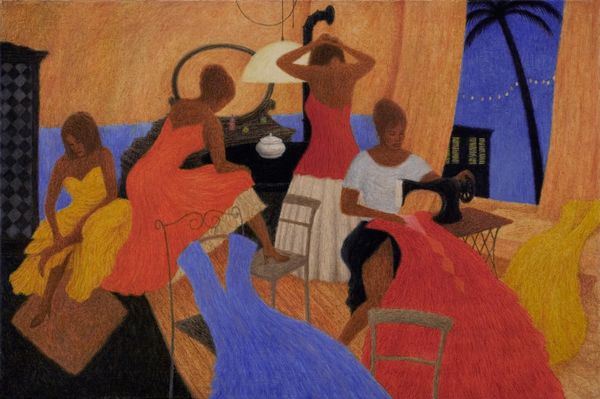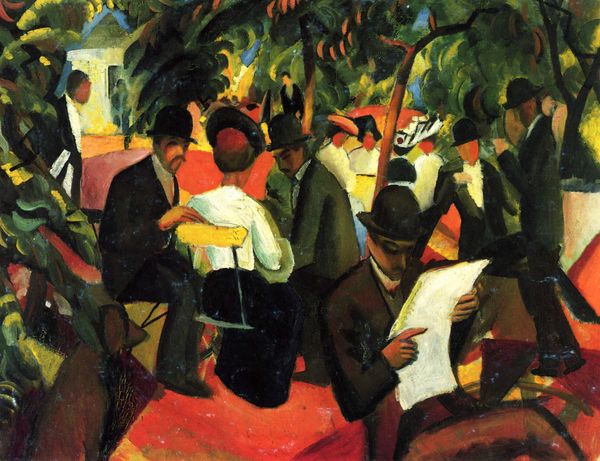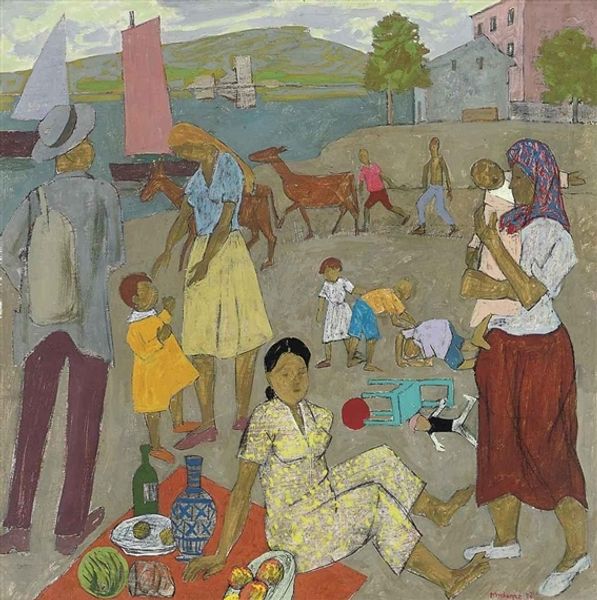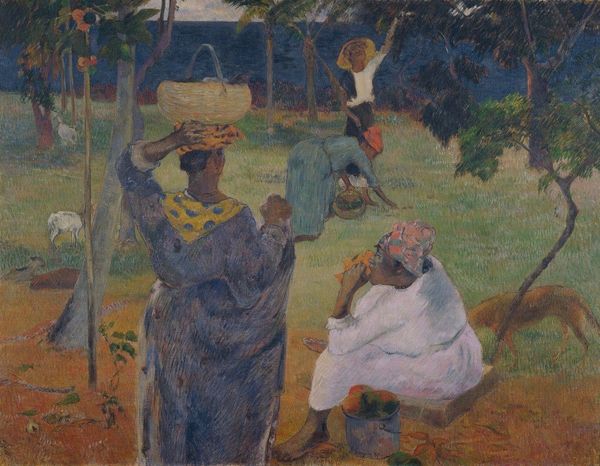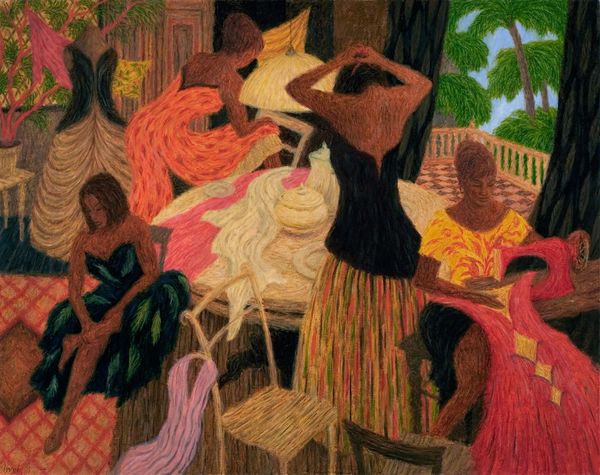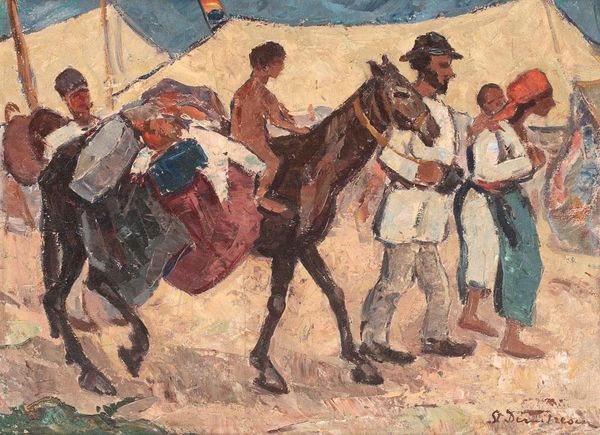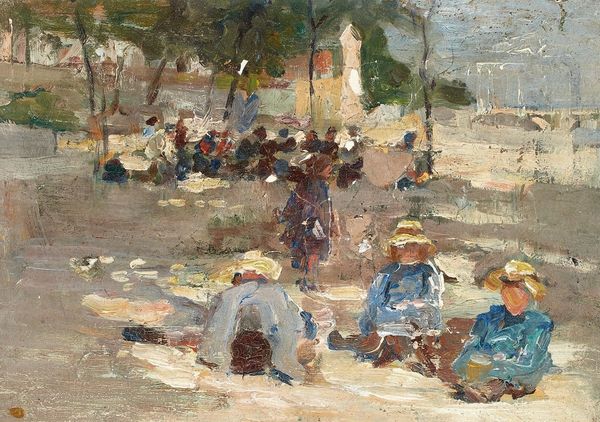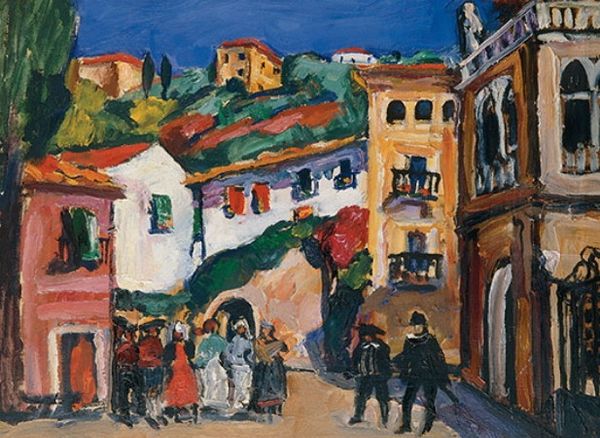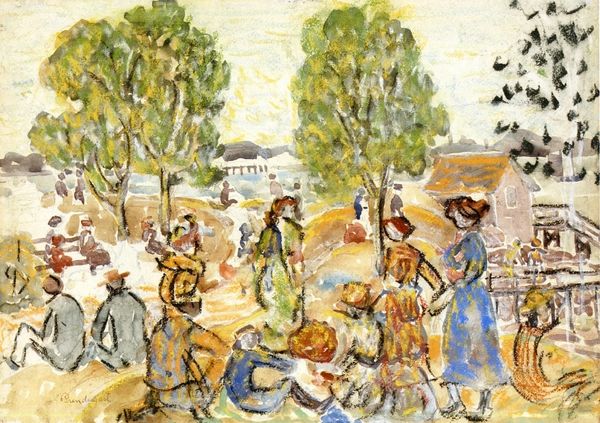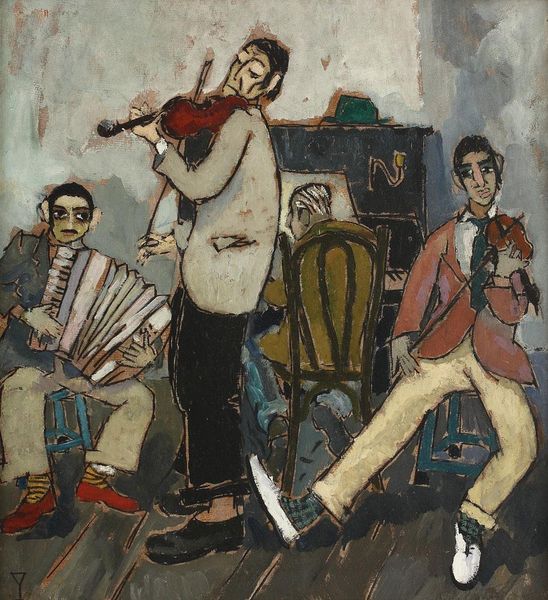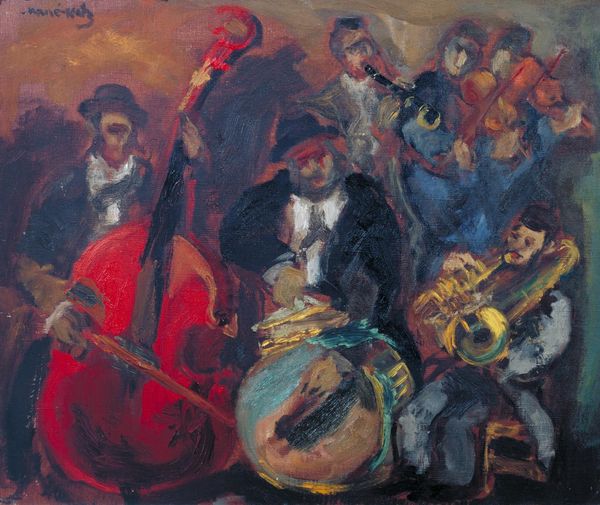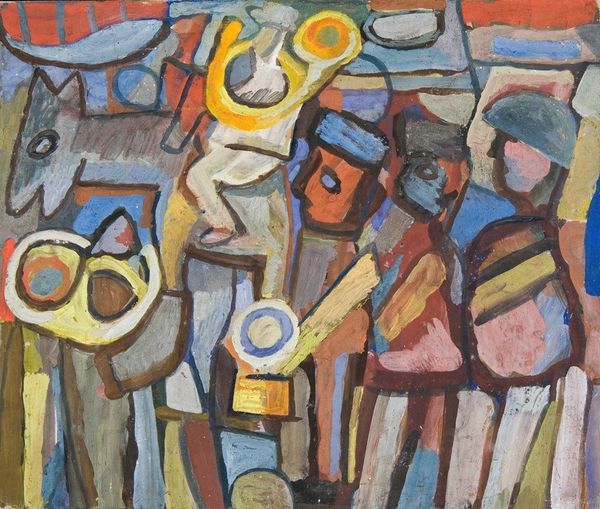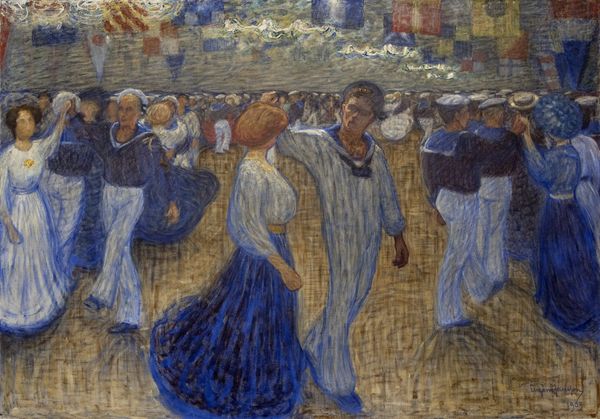
Dimensions: 82 x 62 cm
Copyright: Public domain
Curator: Well, look at this, "Candombe" by Pedro Figari, painted in 1925. It just pulses with a kind of rhythmic energy, doesn't it? Almost makes you want to move. Editor: It does, but my first thought goes beyond the vibrant energy, it reminds us about Uruguay’s layered cultural history, specifically the legacy of African enslavement. Candombe itself, as a dance and drum tradition, emerged from that experience. Curator: Right, and you can see that in the scene itself: the gathering, the music, the implied movement—it's all hinting at a cultural expression born of resistance and resilience. Figari uses these thick, almost gloppy layers of paint, an impasto technique, to bring this lively gathering to life. It’s like the paint itself is dancing. Editor: And the choice to depict this community celebration isn’t neutral. It's a deliberate act of preservation, even reclamation, especially given that at the time, the contributions of Afro-Uruguayans were actively marginalized, a time when “high art” often looked elsewhere for inspiration. Curator: Exactly! And I'd wager that Figari wasn't trying to produce high art in the European academic sense; instead he chose subjects from his immediate surroundings. This feels deeply personal. Editor: Absolutely. And that naive or primitive painting style—terms that, I admit, make me a little uncomfortable—amplifies the message. He’s sidestepping the established art world in favor of representing the lived experiences of everyday Uruguayans, particularly those on the margins. There is a person perched on the roof which I find particularly powerful. Is it a voyeuristic outsider looking in, or maybe it is the overseer or the gods. Curator: Hmmm. It is certainly unsettling—or is it playful. And let’s not forget Figari was no innocent bystander, but a landowner from an elite white background. It definitely injects a tension in how we look at it. And yes, sometimes, to appreciate fully we must ask uncomfortable questions of what the painting might conceal. Editor: But, ultimately, what stays with me is how "Candombe" visually narrates a community holding on to its cultural identity against the odds. And in his decision to give the music visual form and to show the dance, Figari offers a form of witnessing. Curator: Well put! It's more than just a genre scene; it’s a reminder of a living, breathing heritage right there in the heart of Montevideo. Editor: Precisely, it makes us mindful of both resilience and the silences. Art like this forces us to keep the conversation going.
Comments
No comments
Be the first to comment and join the conversation on the ultimate creative platform.
